

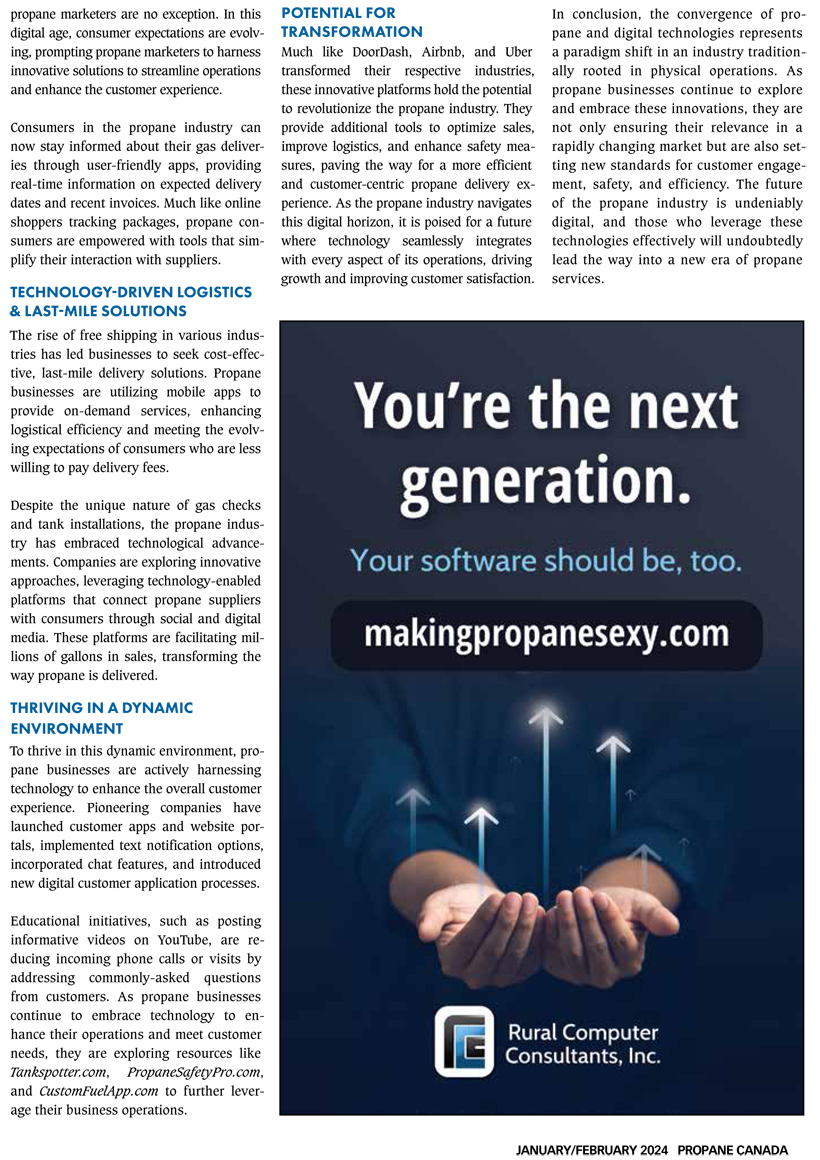
As printed in the BPN Magazine https://bpnews.com/technology/benefits-digitizing-clerical-work-propane
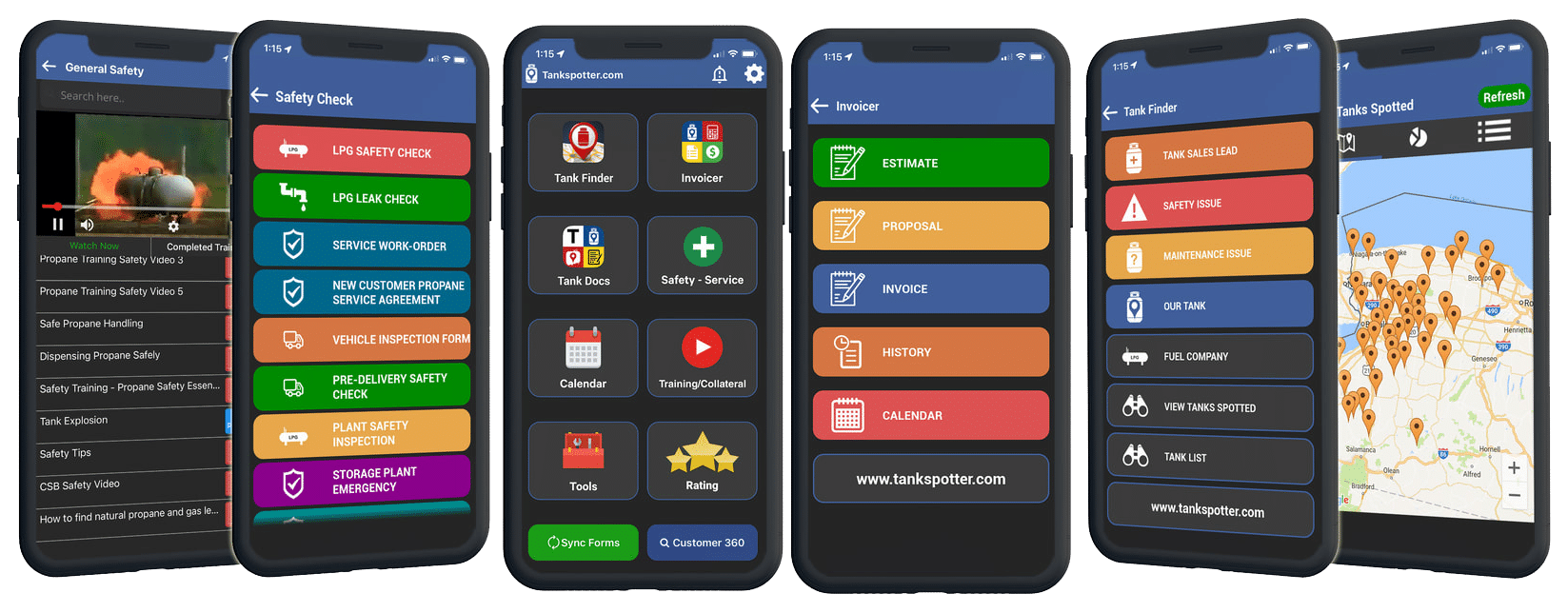
Most of us in the propane industry hate paperwork. Ask any service technician, delivery driver, safety representative, sales representative, manager or office staff if their fondest dream is to have a stack of paperwork waiting for them in the office, and more than 75% will say a resounding no! And you really can’t blame them, as most of the amazing people in the propane industry would much rather be doing productive activities that truly serve the customers and industry we hold dear.
The old saying “The job’s not done until the paperwork is completed” — though completely true — is not the most motivating thing to remember when attempting to complete a difficult task. Imagine hearing an employee say, “This job is a really tough one, but at least I can look forward to the paperwork at the end of it.” Those words have probably never been uttered.
On top of that, we all know that customers do not pay us for the documentation and clerical work we do like filing and managing records. Clerical work, paperwork, etc., is not a money generating activity, but rather a cost overhanging our industry. These days with the cost of tanks, gas, trucks, payroll and insurance rising, we simply do not have the bandwidth to endure unnecessary business costs and desperately need to eliminate them as quickly as possible to prepare for the rising inflation.
So, if paperwork and clerical work is oppressive, time-wasting, energy-sucking and an unnecessary expense, then what can we do about it? This is where a comprehensive technology solution for managing a propane business should swoop down (in tights with a cape, preferably) to help free us from the shackles of old-world drudgery. What does that solution look like and how do you find it?
First, as a base layer, it’s necessary to have a forecasting, routing, ticket printing and billing system in place. Yes, the old-world software solutions that have been around forever (often called the “back-office software” or “ERP”) are necessary, and there are dozens to choose from. Regardless, pick one and get on with it.
They have all been around for at least 20 years and have matured to a point that they all have great functionality. Choosing based on ease of use and pricing will save you many headaches and save your wallet as well. In my studies, more than 95% of the propane companies in North America are already using one, so most likely you already have this; if you don’t, then get it.
Picture Next on the list is choosing a tank monitoring company for the 5% to 10% of your customers who have sporadic fuel usage. There are more than 20 tank monitoring companies, and because this is a newer technology, it may take more homework. Some friends and people in your network may have chosen based on a sales pitch or made their decision years ago, and because the technology is changing frequently, you may need to do some homework on this. But here are a couple quick tips:
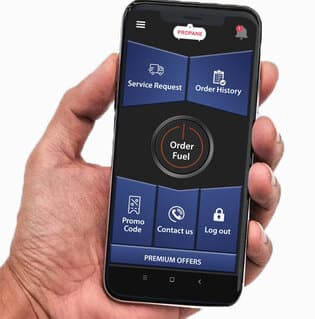 Next, think outside the box and benchmark against the most successful delivery companies. Amazon (2 million deliveries per day) and Uber (17+ million deliveries per day) both do it without offices of customer service representatives and no phone calls. They have an app for customers to use for orders and an app for their employees to do all their work.
Next, think outside the box and benchmark against the most successful delivery companies. Amazon (2 million deliveries per day) and Uber (17+ million deliveries per day) both do it without offices of customer service representatives and no phone calls. They have an app for customers to use for orders and an app for their employees to do all their work.
The businesses are run on smartphones and apps. The future of propane delivery is an app-based world, where your customers are able to order a delivery, see past orders, order service, chat with someone in the back office and receive coupons and messages from you. If you don’t have it yet, you need it, so get an app for your company.
Because this is customer-facing, you need an app that has your name and branding on it in the app store. Some people call this type of app the “poor man’s tank monitor” because it allows you to get tank readings from all your customers without needing to purchase a tank monitor, as the consumer can enter their reading into the app when they go to order.
These are the tools that will help you get more sales per customer and help you grow a fantastic lead list as non-customers download your app to take advantage of your coupons. If it helped Uber go from zero customers to 17 million rides per day in 13 years, that speaks volumes. You should make it easier for propane users to order from you than it is to order from your competitors.
The second half of the equation is to have an “everything” app for your employees. Yes, that is what Amazon, Uber, Tesla and most companies are doing. It eliminates tons of headaches like paperwork, forms, documents, filing and over one hour of wasted time a day per employee. I recently spoke with an industrious propane company that had created some fillable PDFs that the team used as forms for the business. It allowed the team to eliminate paperwork and once saved could be sent to the office as a completed PDF document with signatures, too.
It could also be filed more quickly, as it was digitally clicked and dragged into the appropriate customer file on an iCloud account. To the business owner’s delight, he could finally read everything “written” in each document for a change, too!
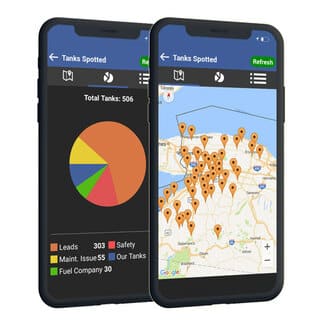 Another propane company had purchased three to four programs, each designed to do different portions of the field employee work. One was great for sales estimates and invoices, another was fantastic for service work orders, another was programmed to do their gas checks and another helped them document and manage their tanks.
Another propane company had purchased three to four programs, each designed to do different portions of the field employee work. One was great for sales estimates and invoices, another was fantastic for service work orders, another was programmed to do their gas checks and another helped them document and manage their tanks.
All programs were app-based, so they could download those apps onto each field employee’s smartphone or tablet and off they went — paperless warriors. All work was done faster, clearer and easier than before. The employees were happy, as their paperwork chore was now much easier, and the company was happy as they were saving money and better handling the business with now legible inspections and work orders.
In speaking with propane attorneys, propane safety consultants and propane insurance companies, they are all singing a similar tune. They see many legal cases where if the propane company had used a digital solution to document the gas check, service work order, installation, liability releases, etc., they would have won their cases. But because they used paper — which is easy to lose, hard to read and easy to defeat in a court room — they lost. The safety experts recommend digital documentation in the field.
If you have not digitized your safety, service tech, sales, training, inspections, and all the work your field personnel do onto a digital tool, there is great news! You now have more options that cost considerably less and do much more than the old technology our industry has used over the last 10 years.
The best technology should be available on an app that can be downloaded right onto the smartphones you already have, so there is no longer any need to purchase tablets or any other old school devices. No need to pay for another cellular line for each tablet; the cellular line you already pay for in the smartphones your team uses can serve as the digital record keeping associated with the paper that is no longer necessary to your outside employee field personnel.
It took spending millions of dollars for trillion-dollar companies to realize that doing everything on a smartphone saves time and capital expenses. Follow the leaders and don’t reinvent the wheel. It is finally time to free up your team from paperwork, clerical work and filing, as well as hand-entering the information your field personnel gather on clipboards and paper. You can be freed from hours of unprofitable payroll and expensive gadgets. Welcome to the age of propane apps on smartphones that make your entire team’s lives easier and more enjoyable.
Check out the options and try out some of the propane apps designed specifically for your technicians, drivers, sales representatives and managers to see how easy it is to save time, aggravation and money. Go to the Apple and Android app stores and do a search for propane apps, try them out, get yourself a couple demos or go to their websites and watch the videos. Take off the chains of outdated paper shuffling and get with the times!
The Propane Education & Research Council, in cooperation with the World Liquified Petroleum Gas Association, held a global technology competition just before the pandemic. Check out the results of that competition for several apps that can help you move toward a faster, more efficient, lower labor and lower operating cost solution.
Enjoy the freedom of having a comprehensive solution for your company so you can have all the forms, documents, inspections, work orders, tank readings and critical company metrics at your fingertips on your smartphone. Start saving time and money while improving every critical company metric. Here’s to a better and brighter future!
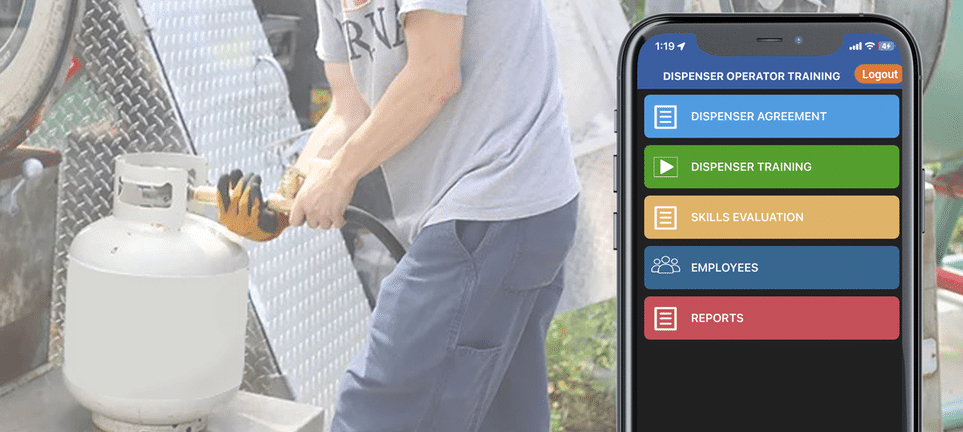
Enhancing Field Service Operations in the Propane Industry
Tank Spotter has earned accolades for pioneering technology-driven solutions that optimize safety, service tech and sales work, dispatching, scheduling, and operations efficiency. With a track record of innovation, the company continues to push the boundaries of what’s possible in the propane industry.
Unlocking the Benefits of Propane Dispensing Training
Propane dispensing demands a profound grasp of safety protocols, equipment operation, and regulatory compliance. With this training feature, all this critical knowledge is now available at your operators’ fingertips.
Taking Excellence Further: Enhanced Features
Tank Spotter’s commitment to excellence extends beyond the core training modules. The Propane Dispensing Training Feature offers additional enhancements that streamline operations and elevate efficiency:
Automated Learning
With training accessible directly through the mobile app, propane dispensing-related training becomes more accessible than ever before. Users can conveniently access training content within the app, enhancing the overall learning experience.
Built-in Dispenser Agreement
Drafting agreement forms can be a time-consuming process. Tank Spotter simplifies this by providing a built-in agreement form developed by legal experts familiar with the propane industry. This streamlines the agreement process, ensuring that agreements are comprehensive and legally sound.
Customizable Training Videos
Customization is key in addressing unique training needs. Tank Spotter’s solution includes customizable training videos, allowing companies to tailor content to their specific requirements. This flexibility ensures that training is relevant and engaging.
Skills Evaluation Forms
Accurate evaluation of operators’ skills is crucial for performance improvement. Tank Spotter offers built-in skills evaluation forms crafted by propane industry experts. These forms enable dispenser managers to assess their operators’ skills accurately.
Comprehensive Reporting
Propane companies and dispenser managers can generate detailed reports, including training history and skill evaluations, through both the app and the web dashboard. These reports provide valuable insights into training effectiveness and skill progression, aiding in informed decision-making.
Leading Transformation in the Propane Industry
By introducing propane dispensing training and a comprehensive suite of related features, propane companies can reduce their risk profile, minimize catastrophic incidents, and more affordably and easily train all their dispenser stations. When propane companies use Tank Spotter, they can save significant time and resources, translating into substantial cost savings.
The benefits propane companies obtain underscore Tank Spotter’s commitment to not only meeting industry needs but also pioneering industry progress. Tank Spotter empowers organizations to streamline their operations, enhance safety, sales, and service work, ultimately driving profitability.
Explore how the propane dispenser training module is reshaping dispenser operational management by visiting PropaneDispenserApp.com.
Tank Spotter, winner of Best Propane app in America and Best in World has unveiled a first ever dispenser training and management app to significantly reduce liabilities, streamline safety protocols, and elevate overall service quality.
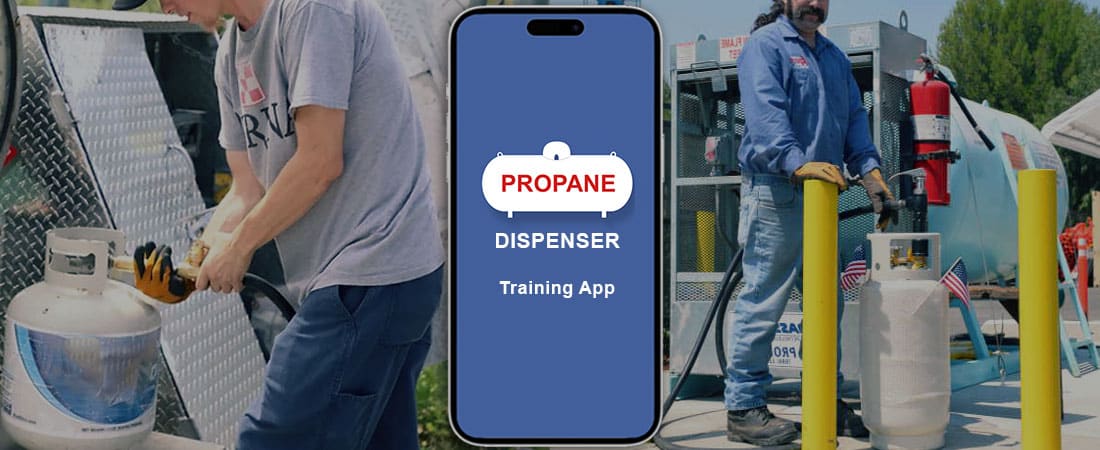
Elevating Field Service Operations in the Propane Industry
Tank Spotter has earned its reputation by pioneering technology-driven solutions. Its real-time connectivity and efficiency-enhancing capabilities have already made significant strides in optimizing safety, service tech and sales work, dispatching, scheduling and boosting operations efficiency.
Presenting the Future of Propane Dispenser Training
The latest of Tank Spotter’s groundbreaking offerings is the introduction of its propane dispenser training and management feature – an industry first. This feature empowers the companies who operate propane dispensers with easily accessible, comprehensive training modules available directly through their smartphones. The complexities of propane dispensing, from adhering to safety protocols to understanding equipment operation and regulatory compliance, are now at operators’ fingertips and tracked, monitored and managed remotely.
Key Advantages of the Propane Dispensing Training Feature:
1. Flexible Learning: There is high turnover among dispenser operators so getting them all trained is hard…With on-demand training modules accessible from an app anytime and anywhere, dispenser operators can seamlessly integrate learning into their schedules.
2. Easy Remote Management: Both Dispenser managers and propane companies can remotely track and manage training to ensure 100% compliance of even new hires in this highly transient employee business
3. Enhanced Safety Measures: Safety is essential in the propane industry. This training equips propane dispenser managers and operators with in-depth knowledge to handle propane safely, ensuring compliance and mitigating risks.
4. Precision and Efficiency: Well-trained operators function with greater precision and efficiency, translating to exceptional service quality and elevated customer satisfaction.
5. Certification Credentials: Upon successful module completion, dispenser operators are certified, attesting to their proficiency and adherence to industry best practices.
6. Staying Current with Industry Standards: Evolving industry standards are integrated into the training, ensuring propane companies stay updated with the latest procedures and regulations.
Taking Excellence Further: Enhanced Features
Tank Spotter’s Propane Dispensing Training Feature is more than a training module. It offers a suite of additional benefits designed to transform propane service operations:
Automated Learning: Dispenser managers and operators can receive training directly through their smartphone via the mobile app, making propane dispensing-related training more accessible than ever.
Built-in Dispenser Agreement: Tank Spotter eliminates the need for companies to draft their own agreement forms. The built-in agreement form, developed by propane industry attorneys and insiders, greatly streamlines the process.
Built-in Propane Dispensing Training Videos: The app includes customizable training videos, ensuring content can be tailored to individual needs.
Skills Evaluation Forms: The app features built-in skills evaluation forms crafted by propane experts. Dispenser managers can accurately evaluate their operators’ skills.
Comprehensive Reporting: Propane companies and dispenser managers can generate reports, such as training history and skill evaluations, from the app and the web dashboard.
Leading Transformation in the Propane Industry
By introducing propane dispensing training and a comprehensive suite of related features, Propane companies can reduce their risk profile, reduce catastrophic incidents, remotely track training of dispenser companies and more affordably and more easily get all their dispenser stations Fully trained. When propane companies use Tank Spotter they quickly save an hour per day per employee creating significant efficiencies that can save tens of thousands of dollars.
The benefits propane companies obtain underscores Tank Spotter’s commitment to not only meet industry needs but also in pioneering industry progress.
Tank Spotter empowers organizations to streamline their operations, enhance safety, sales and service work to drive profitability.
Explore how the propane dispenser training module is reshaping dispenser operational management by visiting TankSpotter.com.
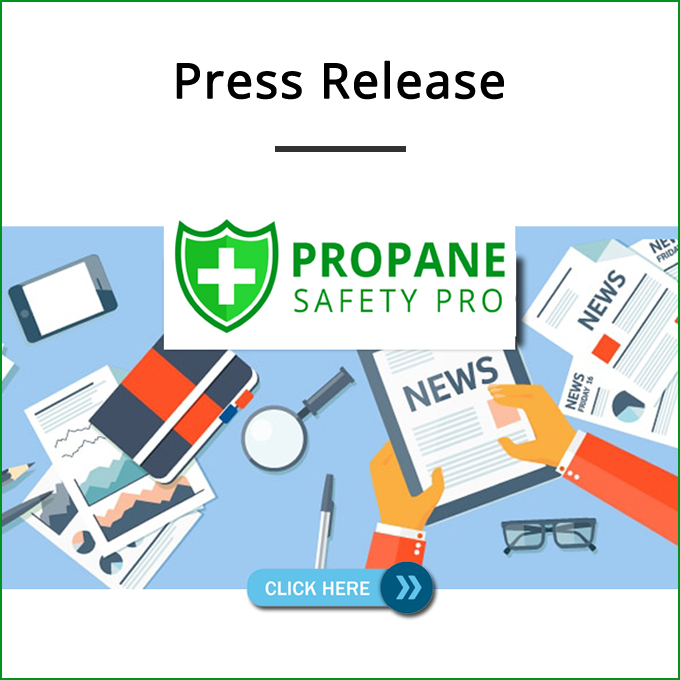
New Safety Resource Launched for Propane Companies: PropaneSafetyPro.com
PropaneSafetyPro.com is proud to announce the launch of their new safety resource for propane companies. This innovative platform allows propane companies to have their Safety Plans reviewed, updated, and revised, including their critical Policies and Procedures, Security Plans, and Operations-Maintenance manuals.
Safety is a top priority for propane companies, and PropaneSafetyPro.com provides a convenient and comprehensive solution for ensuring that all necessary safety measures are in place. The platform’s team of experts has extensive knowledge and experience in the propane industry, making them well-equipped to provide valuable insights and recommendations for improving safety protocols.
“We are excited to offer this new resource to propane companies,” said Eric Leskinen, National Safety Expert at PropaneSafetyPro.com. “Our team is dedicated to helping propane companies maintain the highest level of safety possible. With our platform, companies can have peace of mind knowing that their safety plans are up-to-date and in compliance with all industry standards.”
In addition to reviewing and revising safety plans, PropaneSafetyPro.com also offers a range of safety-related services, including remote monthly compliance and technical support, onsite training and emergency response planning.
Propane companies need to keep all aspects of their operations up to date on the latest National Fire Protection Association (NFPA) 58 regulations for several reasons.
First, according to NFPA 1, the storage, use, and handling of liquefied petroleum gases (LP-Gas) must comply with the requirements of NFPA 58. Therefore, it is very important for propane companies to stay up to date on the regulations outlined in this code to ensure that their products and services are in compliance.
Additionally, NFPA 58 is constantly undergoing development, with new editions being released periodically. The latest edition of NFPA 58 is the 2023 edition, which has undergone revisions and is currently in the public comment period. Staying up to date on the latest edition of the code can ensure that propane companies are aware of any changes and can take the necessary steps to comply with them.
Furthermore, the latest edition of the code has changes which may impact the procedures and maintenance checklist for propane companies. It is important to review these changes to ensure that the procedures and checklists are revised accordingly.
In conclusion, propane companies should stay up to date on the latest NFPA 58 regulations to ensure compliance with the code and to be aware of any changes that may impact their procedures and maintenance checklists. Keeping every manual, process and operation up with the latest edition of the code can help ensure the safety and compliance of the company’s products and services, and ultimately lead to business growth and success.
For more information about PropaneSafetyPro.com and the services they offer, visit their website at propanesafetypro.com.
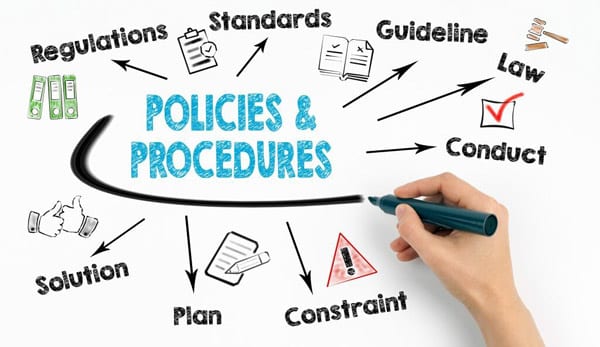
When it comes to establishing a solid safety training program, Policies & Procedures are the first place to start. Policies & Procedures are critical because they help companies meet compliance requirements and reduce liability, but their valuable role in training employees cannot be overlooked. Policies & Procedures are essential to promote a culture of safety in the workplace and offer a standard for all employees to follow. As blended learning between online and in-person training becomes more common in our industry, it is more important than ever to have a Policies & Procedures Manual that serves as a guiding document for all employee training needs.
The propane industry is guided by codes and regulations that can be federal, state, or local. Several key industry stakeholders recommend Policies & Procedures to help propane marketers maintain proper employee training and stay compliant with these codes and regulations include:
Think about it, you aren’t training new employees to follow outdated training guidelines. Make sure your Policies & Procedures Manual is current so that it can do what it does best, keep daily operations running smoothly and reduce risk. It’s critical that your Policies & Procedures Manual is a living document and that it is updated as your company and code requirements change, and should be reviewed on an annual basis to include these changes. This will allow your team to discover and remediate shortcomings. If you have Policies & Procedures, when was the last time you reviewed them? Do you provide training to all employees regularly and to new employees as a part of the onboarding process? If you already have Policies & Procedures, or once you complete your first manual, it is important to recognize that this isn’t a “one and done” deal. For example, recent changes to the OSHA Crane Rule have deeply impacted the way many propane marketers conduct business. Your Policies & Procedures should reflect this new rule and employees should be trained according to your Policies & Procedures so that they are aware of the new crane rule and how it applies to their tasks.
If your company does not yet have a Policies & Procedures Manual, you should have one. Plain and simple. It is crucial in order to train employees, uphold a successful safety program, meet regulatory codes and requirements, and avoid dangerous scenarios or expensive fines. And if you already have Policies & Procedures in place, make sure you review your manual at least once a year and make updates as code requirements change. Working with a safety professional can make reviewing and updating your Policies & Procedures Manual simpler and more convenient, and will ensure that your manual is up to date with industry code changes.
Eric H. Leskinen, executive vice president of Propane Safety Pro, has over 30 years of experience with career progression from field operations to corporate direction. He has designed, managed, and executed safety training and compliance programs for multi-state companies with up to 1100 employees.
 A veteran of the industry, Eric has over 33 years of experience with career progression from field operations to corporate direction. He has designed, managed, and executed safety training and compliance programs for multi-state companies with up to 1,100 employees. As a true compliance and safety specialist his background and skill set make our training services invaluable to marketers seeking to improve their compliance and overall efficiency.
A veteran of the industry, Eric has over 33 years of experience with career progression from field operations to corporate direction. He has designed, managed, and executed safety training and compliance programs for multi-state companies with up to 1,100 employees. As a true compliance and safety specialist his background and skill set make our training services invaluable to marketers seeking to improve their compliance and overall efficiency.
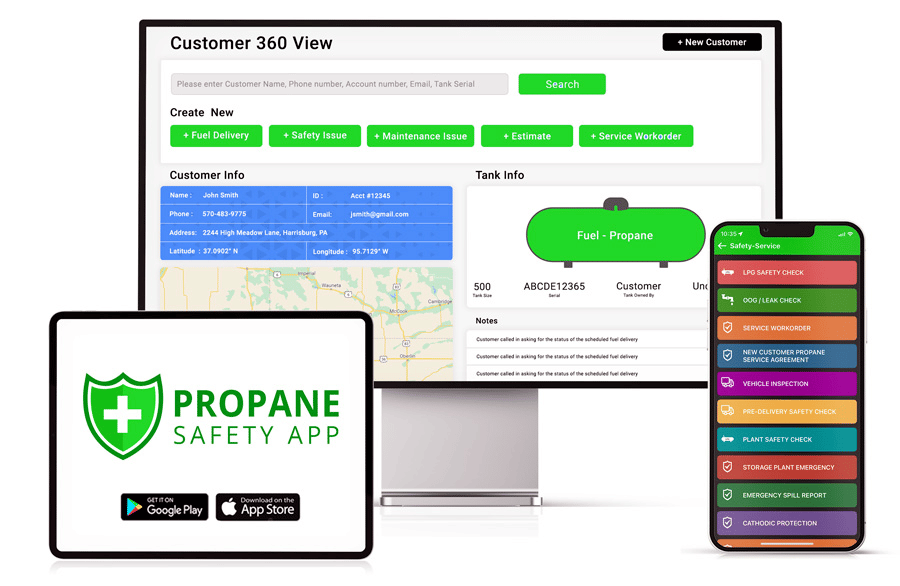 Recently while speaking with Eric Leskinen of PropaneSafetyPro.com it became clear that managing properly the Propane Container Placement and Documentation could do much more one might expect.
Recently while speaking with Eric Leskinen of PropaneSafetyPro.com it became clear that managing properly the Propane Container Placement and Documentation could do much more one might expect.
The old adage that “the job’s not done until the paperwork is completed” still applies in the propane industry. Propane Safety Consultant, Trainer, Subject Matter Expert, and past President of the Propane Gas Defense Association, Eric Leskinen of PropaneSafetyPro.com would agree. Fortunately, time has moved on and technology has advanced so some believe that now we can use a simple smartphone to back up our paperwork with a photo but will that truly suffice?
For decades the propane industry has protected itself with mountains of paperwork carefully filed in bullet proof file cabinets. Paper documentation has always had its drawbacks such as it can be lost,
illegible, performed incorrectly, filed incorrectly, etc. The advent of digital photos provided some hope but legally proving the photos were taken at the day and time of installation or service work and prove
the viability of the whereabouts of those same pictures can provide a challenge. Add to this the challenge of coordinating and attaching the correct photos with the client’s physical files or digital files
can be extraordinarily difficult especially in the heat of the winter delivery season.
The advent of an app for both Apple and Android smartphones (and tablets) as seen in Eric’s Propane Safety App allows for much easier documentation with validation of photos that are authenticated with time, date and geocode capture validated by auto connecting them to the documentation and auto filing them with the customer digital file.
The next step is ensuring the propane container is placed properly and meets appropriate guidelines.
With the cost of propane containers and the cost of not documenting things properly it is critical to ensure that your employee team is appropriately trained to maintain these requirements while installing and servicing propane containers. Having written policies and procedures in place helps but to say it plainly, tracking and auditing every propane container in your company’s portfolio is a mountain of
work.
Using a photo documentation process will make meeting container placement requirements easier and help your team improve operational efficiencies along the way.
Simplifying Propane Installation Tracking & Audits
Tracking your containers and auditing them for compliance is a best practice recommended by propane safety experts to maintain compliance with government requirements and ensure that employees in the field are completing their responsibilities appropriately. It’s a great tool to not only help management with overall risk reduction, but to also evaluate technician performance and provide any necessary training feedback.
When your delivery drivers are out on their routes and your service technicians are in the field, have them take photos of the container installations at each customer location they visit.
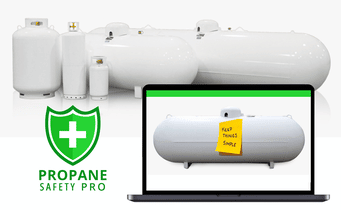
Fortunately, it is now easier than ever with the Propane Safety App. You’ll have direct visual documentation to include with the customer’s account showing that the tank set your company installed and/or serviced is compliant with government container requirements.
It is a good idea to take a photo of every container that your company delivers to or installs and update that photo on a regular basis. When your drivers and service technicians are out in the field, have them take photos of any installations they identify as noncompliant. This will make sure noncompliant containers are recorded, followed up on, and corrected to help eliminate issues and risks for your company. Plus, taking a quick photo of a noncompliant container is much easier instead of filling out a report after the fact. Always remember, photo documentation is a helpful tool, but your employees should still utilize their training to visually inspect containers for compliance issues.
No Photo Documentation? That Could Cost You.
So, we’ve talked about the benefits of implementing a photo documentation process into your company’s operations, but what exactly are the risks of skipping it all together? One of the greatest threats to a propane company is the DIY homeowner. From obstructing containers with objects or renovations to completely moving the container set all together, nothing is unheard of in our industry. And any scenario you might think of could result in a safety hazard, and a lawsuit for your company.
In a situation like this, having clear photo documentation that the container in question was compliant with local and regional government requirements will help to protect your company from liability in the event of litigation. And even more likely, a photo documentation process will help avoid unnecessary safety hazards to better protect your customers in the long run, too.
Special thanks to Eric Leskinen of PropaneSafetyPro.com and his contribution to the industry and for his thoughts along these lines. If you want to connect with him for training, creating appropriate manuals or to see his Propane Safety App you can connect with him on his site PropaneSafetyPro.com .

 A War Veteran and Veteran of the industry Bill has managed over 87 fuel delivery branch offices including operations, marketing, safety and profitability. He has helped over 200 fuel companies improve profitability. His hands on experience makes the Propane Safety app both easy to use and comprehensive saving companies time, money and make leaps forward in safety and compliance.
A War Veteran and Veteran of the industry Bill has managed over 87 fuel delivery branch offices including operations, marketing, safety and profitability. He has helped over 200 fuel companies improve profitability. His hands on experience makes the Propane Safety app both easy to use and comprehensive saving companies time, money and make leaps forward in safety and compliance.

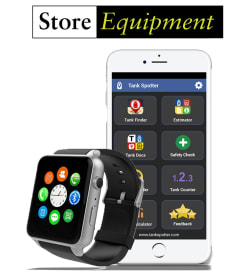
Hardly a week goes by without some new app rolling into the marketplace to help make business more profitable and efficient than ever before.
“Newest and Most Interesting”
Propane Quarterback a fuel delivery Consulting firm in Philadelphia, Pennsylvania, called the TankSpotter app (tankspotter.com) “the newest and most interesting app in our industry.” It is actually a combination of four apps, which they described as follows:
1.TankFinder. “A very popular and super easy-to-use app for documenting all your safety/maintenance issues in the field, with a plus that it allows you to document all your competitor’s tank locations and addresses. It is a nice way to make a targeted marketing list.”
2.Estimator. “A shortcut way for salespeople and non salespeople to do easy estimates, proposals and invoices, with your custom parts list already in it. The sales reps and managers I spoke with love it, as it helps them close more deals.”
3.TankDocs. “A cool app that has all the industry forms and documents needed for installing fuel tanks — trenching release, tank inspection, DOT tank pickup, etc. I’m told they are customizable.”
4.Safety Check. “Safety is paramount in the fuel industry, and this app has the safety inspections important to the industry, like their version of the
The 5-Star Rating app, which Propane Quarterback called “so cool,” is also included inside the TankSpotter app and “allows you to capture real customer feedback and get their 5-star rating. It then sends it to management so they can instantly post it to the company website, Facebook page or Twitter,” he said. “This is the marketing tool for getting known on the internet with great ratings. This four-in-one app is connected to a cloud application ‘command center,’ so all the data is filed instantly, and the management can see issues instantly. This seems to be one of the most useful apps in the industry, and it is a four-in-one combo deal.”
With competition heating up, innovative apps are becoming less an option than a requirement. Not using technology may cost more than using it, Propane Quarterback warned. “Investing in safety is a good investment, but investing in safety that leverages technology, like the safety app in TankSpotter. This new app, is a very smart way to improve safety at a much lower cost with higher benefits than the old way of doing business,”.